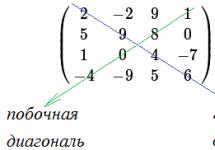| Reliability category | SECOND | THIRD |
| Technical part |
|
|
| Legal part |
|
|
SECOND reliability category is understood as the power consumption of two cable lines fed from two different transformers, with the division of its consumers into two equal groups. The second category does not make it possible to constantly consume all the power through one cable line (from one transformer), and use the second one as a "cold reserve". On the contrary, MOESK clearly states in its Specifications the requirement “ distribute evenly load by input and phases. That is, half of the consumed power supplied via one cable line must be used for one half of the subscriber's consumers, and the second half of the power supplied via the second cable line - for the second half of the consumers. Not realizing this, subscribers install VRShch with one changeover switch, with one meter and one outlet line for their consumers. However, this is fundamentally not true if we consider the practice of connecting to the networks of PJSC MOESK. Upon acceptance of the ASU (VRShch) of the subscriber, MOESK will require to redo everything and mount the input-distribution device according to the “cross” scheme, which provides for at least two separate consumer groups, two meters that count the consumption on each of the two distribution lines. Of course, in the event of an accident on one of the two supply lines, the subscriber can switch the entire load to one input by disconnecting the emergency cable, but this will be considered an emergency mode and it is not allowed to feed on such a scheme for a long time (the RER ISS is monitoring this).
But all this is half the trouble. The trouble for many subscribers is that no one in MOESK, upon receiving applications for technical connection from subscribers, tells subscribers (because they are not obliged) about the need to hand over the electrical installation to Rostekhnadzor. Meanwhile, by ticking the “second category” item, the subscriber must know that the grid organization will supply voltage to electrical installations powered by the second category of reliability only after the subscriber receives the Rostekhnadzor Tolerance Certificate. And in order to hand over the electrical installation to Rostekhnadzor, the subscriber must develop a power supply project, coordinate it with Rostekhnadzor, and present the finished electrical installation to the inspector of Rostekhnadzor for inspection, which is very troublesome. Moreover, both the power supply project and the electrical installation should include not only power cables and ASUs, but also the entire distribution network, up to light bulbs and sockets. That is, to put only one VRShch and hand it over to Rostekhnadzor as an “electrical installation” will not work.
The ideal algorithm for connecting to the electrical network according to the second category of reliability:
-
The subscriber submits an application for technical connection to the networks of MOESK and for the conclusion of an agreement with MosEnergoSbyt.
-
MOESK carries out technological connection,
-
MOESK within the program additional services sets the subscriber to the "correct" VRSC,
-
The subscriber designs the distribution network and approves the power supply project in RosTekhNadzor (by himself or attracts a contractor),
-
The subscriber mounts the distribution network to the end consumers (by himself or attracts a contractor),
-
The subscriber hands over the electrical installation to the inspector of Rostekhnadzor (by himself or engages a contractor),
-
The subscriber receives in Rostekhnadzor the Certificate of approval of the electrical installation for operation (by himself or attracts a contractor),
-
The subscriber submits the Certificate of admission to MosEnergoSbyt,
-
MosEnergoSbyt submits a note for inclusion, MOESK supplies voltage.
As advertising: we provide services for the implementation of all of the above activities that fall within the competence of the Subscriber - filing an application with PJSC MOESK, obtaining a technological connection agreement, designing internal power supply, coordinating the project with Rostekhnadzor, installing a turnkey electrical installation and handing over the electrical installation to inspectors of PJSC MOESK with the receipt of the Act on technical connection and to the inspectors of Rostekhnador with the receipt of the Certificate of admission of the electrical installation into operation. The cost of such a comprehensive service is from 100,000 rubles per object.
THIRD reliability category electricity supply is considered “less reliable” due to the presence of only one power source and one cable line. However, the third category currently seems to us to be a priority due to the following factors:
►The response time of the ISS DER to an accident with the third category of reliability does not differ much from the response time for the second category, and now it is (in practice) three hours from the moment of the accident to the moment of backup power supply.
►The failure of the transformer (and basically the second category is chosen to remove such a risk) is so rare that this probability can be neglected if your premises are not an operating room, a museum or a bank.
►The cost of technological connection in the third category is usually cheaper by more than 50% than the connection in the second category (in total, with the costs of the STS, Rostekhnadzor, etc.).
►The term of technological connection for the third category is much shorter (taking into account the time of designing the distribution network, approval by Rostekhnadzor, obtaining the Certificate of Admission, etc.).
I was prompted to write this material by the frequent calls of subscribers with a request to solve their problems caused by the wrong choice of reliability category. However, changing the reliability category is not always possible. For example, if the grid company has already designed (and, God forbid, already laid) two cable lines to connect your electrical installation in the second category, then it will be possible to change the reliability category to the third only by paying the grid company the cost of laying "extra cable lines" under a loss compensation agreement . And these are sums with six zeros. Therefore, I appeal to all subscribers of electrical networks - be careful in your desires, they tend to come true. And when applying for technological connection to MOESK networks, contact professionals, at least for advice. The choice is yours!
Many are interested in the question why for some consumers electrical energy separate power supply lines are being pulled up, automatic reserve input schemes are being created, and the rest can be without power supply for a day, and sometimes more. The use of any power scheme depends on the category of reliability of supply to the consumer, or a group of consumers. They are divided into three groups - the first, second and third.
The first category of power supply reliability
This group does not allow interruption in the power supply. An interruption in the supply of electrical energy to an object can lead to very serious consequences, such as:
- Danger to human life and health;
- Mass marriage of products;
- Expensive equipment can fail;
- Complex technological process is broken;
- Violation of the normal functioning of public utilities;
The most significant weight of this category in the industry, where the stoppage of work, for example, such devices as the main ventilation fan of the mine, leads to the shutdown of the mine and the evacuation of all people from it, which is a disruption of the technological process that endangers the life and health of people, and also leads to mass underproduction and the threat of an explosion in the mine.
The largest component of consumers of the first category of power supply comes to the chemical and metallurgical industries, in other industries specific gravity this load is much lower.
At metallurgical plants that do not have a full cycle of metal production (only coke shops or blast furnaces, etc.), the number of electrical receivers of the 1st category can be about 70-80%, and with a full cycle of 25-40%. In plants producing synthetic rubber, approximately 70-80% of the total plant load.
Of the power receivers of the 1st category, a special group of consumers can be distinguished, the uninterrupted supply of electrical energy to which is necessary for an accident-free shutdown of production in order to prevent emergencies (threats to life and health of people, damage to expensive equipment, fires, explosions and others).
When designing the power supply of consumers of this group, it is necessary to carefully study the specifics of production and the technology of operation of the designed object. Unnecessarily, you do not need to overestimate the power for this group. Consider and compare all possible options. It is also mandatory to provide backup power for the receivers of this group.
Examples of such receivers can be:
Mine hoists that provide lifting of people from the mine in case of emergency
When stopped technological process blast furnace cooling pumps:
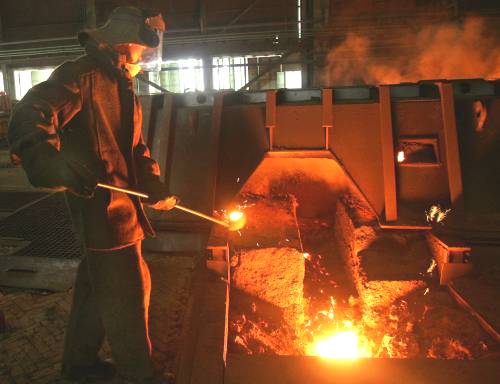
They also include consumers whose supply interruption leads to environmental pollution with substances hazardous to human life and health. In a domestic example, these are sewage systems:
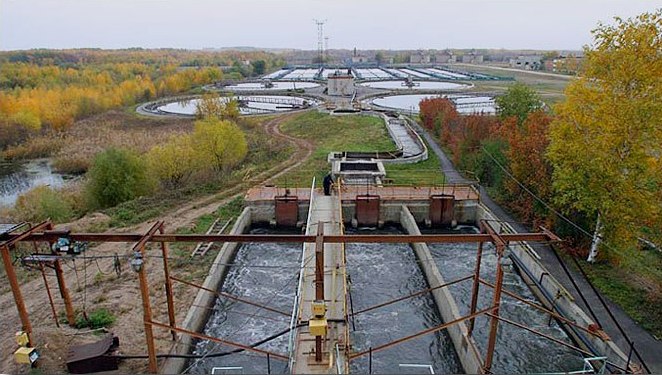
The second category of power supply reliability
During a power interruption of consumers of this group, the following may occur:
- Mass downtime of workers and equipment;
- Mass undersupply of the company's products;
- To stop electric transport;
For such receivers, backup power is also provided, but unlike power receivers of the 1st category, interruptions in the power supply may be allowed for manual input of backup power or for the repair team to leave for manual switching at substations where there is no permanent duty personnel. If the automatic input of the reserve (ATR) does not entail large financial costs, it can also be applied to consumers of the 2nd category.
This group is the largest for all industries. She is not homogeneous. In this group, there may be loads that are closer in their technological requirements to electrical receivers of the 1st category, and some are closer to the 3rd category. The issues of uninterrupted power supply of this category must be approached very carefully and redundancy should not be applied constantly, as required by the first category of power supply.
These circumstances are reflected in the PUE, which, under certain circumstances, allow not to create a special reservation for consumers of the 2nd category. The level of power supply reliability is determined mainly with the help of technical and economic calculations based on minimal cost called when production stops.
The third category of power supply reliability
This group included all other electrical receivers that did not fall into either the first or second categories. For household consumers, these are residential areas, houses. For industry - workshops where there is no mass production of products or auxiliary workshops. This group allows a break in the power supply for the time required for the repair (replacement) of electrical equipment, but should not exceed more than 1 day. When designing the power supply of these devices, it is necessary to take into account the methods of laying cables, the redundancy of the transformer (when replacing the transformer), so that the repair is completed within the time specified in the PUE.
It can be concluded that when designing a power supply system for both an industrial enterprise and domestic consumers, it is necessary to take into account the influence of various factors that will affect the reliability category. Also, analyze the responsibility and purpose of electrical receivers, their role in the technological (domestic) process, the allowable power outage time.
Chapter 1.2. Power supply and electrical networks
(Agreed with Gosstroy of the USSR on August 3, 1976;
approved by the Main Technical Administration and Gosenergonadzor of the USSR Ministry of Energy on July 5, 1977)
GUARANTEE:
Since January 1, 2003, chapter 1.2 of section 1 of the "Electrical Installation Rules" of the sixth edition has become invalid. See chapter 1.2 of section 1 "Power supply and electrical networks" as amended by the seventh edition, approved by order of the Ministry of Energy of the Russian Federation of July 8, 2002 N 204
Scope, definitions
1.2.1. This chapter of the Rules applies to all power supply systems. Power supply systems for underground, traction and other special installations, in addition to the requirements of this chapter, must also comply with the requirements of special rules.
1.2.2. An energy system (energy system) is a set of power plants, electrical and heat networks interconnected and connected by a common mode in the continuous process of production, conversion and distribution of electrical energy and heat with the general management of this mode.
1.2.3. The electrical part of the power system is a set of electrical installations of power plants and electrical networks of the power system.
1.2.4. The electrical power system is the electrical part of the power system and the receivers of electrical energy powered by it, united by a common process of production, transmission, distribution and consumption of electrical energy.
1.2.5. Power supply is the provision of electrical energy to consumers.
The power supply system is a set of electrical installations designed to provide consumers with electrical energy.
1.2.6. Centralized power supply is the power supply of consumers from the power system.
1.2.7. An electrical network is a set of electrical installations for the transmission and distribution of electrical energy, consisting of substations, switchgears, electrical conductors, overhead (VL) and cable power lines operating in a certain area.
1.2.8. A receiver of electrical energy (electric receiver) is an apparatus, unit, mechanism designed to convert electrical energy into another form of energy.
1.2.9. A consumer of electrical energy is a power receiver or a group of power receivers, united by a technological process and located in a certain area.
1.2.10. An independent power source of an electrical receiver or a group of electrical receivers is a power source on which voltage is maintained within the limits regulated by these Rules for the post-emergency mode, when it disappears on another or other power sources of these electrical receivers.
Independent power sources include two sections or busbar systems of one or two power plants and substations, while simultaneously meeting the following two conditions:
1) each of the sections or bus systems, in turn, is powered by an independent power source;
2) bus sections (systems) are not interconnected or have a connection that is automatically disconnected when one of the bus sections (systems) malfunctions.
1.2.11. When designing power supply systems and reconstructing electrical installations, the following issues should be considered:
1) the prospect of development of energy systems and power supply systems, taking into account the rational combination of newly constructed electrical networks with existing and newly constructed networks of other voltage classes;
2) ensuring a comprehensive centralized power supply to all consumers located in the coverage area of electrical networks, regardless of their departmental affiliation;
3) limitation of short-circuit currents by limiting levels determined for the future;
4) reduction of electrical energy losses.
At the same time, external and internal power supply should be considered in a complex, taking into account the possibilities and economic feasibility of technological redundancy.
When resolving redundancy issues, one should take into account the overload capacity of electrical installation elements, as well as the availability of a reserve in process equipment.
1.2.12. When solving the issues of development of power supply systems, repair, emergency and post-accident modes should be taken into account.
1.2.13. When choosing independent mutually redundant power sources that are objects of the power system, one should take into account the possibility of a simultaneous dependent short-term decrease or complete loss of voltage for the duration of the relay protection and automation in case of damage to the electrical part of the power system, as well as a simultaneous long-term loss of voltage on these power sources in case of heavy system accidents.
A modern resident of a developed metropolis cannot imagine his life without all kinds of devices and mechanisms. But most of them function through consumption. Therefore, sometimes it seems that it is impossible to imagine normal life without it. Currently, electrical networks tightly entangle almost all populated corners of the globe. Their construction in the simplest representation consists of many sources, as well as points of transformation, distribution, and the type under consideration. However, some consumers need a constant and uninterrupted supply, while individual devices may be for some time without being connected to the main supply network. So to which group should this or that mechanism be attributed? It is this question that will be considered in the material presented below.
As mentioned earlier, different devices have different requirements for the power supply conditions from the electrical network system. Currently, a classification is used that includes three main groups, each of which is called the "power supply category". It should be noted that such a division is applicable to individual electrical receivers. However, in most cases it is necessary to talk about their combination. They may contain both devices belonging to the first category, and mechanisms that are attributed to the third. In such situations, you should pay attention to the number of which electrical receivers prevails over the rest. In this regard, it was decided to refer the previously described groups mainly to one of the supply categories in terms of reliability. Let's consider each of them in more detail.

Main feature
After considering this classification, it is necessary to understand what it is based on. The most important criterion for dividing into the above groups was the need for from the electrical network. For example, one cannot compare in importance the usual a private house in the village and some health facility, such as a hospital. Agree that even the slightest interruption in the power supply of operating rooms will lead to the life of a person who is at that time in the hands of doctors. Conversely, residents of a residential building can be without electricity without much loss. 
1 group
The consumers of the first category of power supply in terms of reliability include those devices and mechanisms, a break in the supply of which can lead to a threat to the life and health of people, a threat to the normal existence of the state and its security, including rather large material damage. In addition, this also includes the disruption of complex technological processes, a disastrous change in the functioning of strategically important components of television and communications, as well as public utilities. The first category of power supply, as mentioned earlier, includes fairly responsible receivers of electrical energy, so there are a certain number of requirements for them.
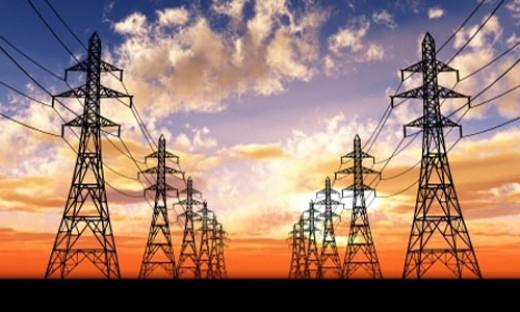 One of these can be considered a power supply from two unrelated sources. It is independence that is the most important criterion. The use of such schemes is due to a significant reduction in the risk of an emergency shutdown of receivers from the mains. The category of power supply under consideration allows interruptions in the supply of energy only for the time necessary and sufficient for automatic switching from one source to another.
One of these can be considered a power supply from two unrelated sources. It is independence that is the most important criterion. The use of such schemes is due to a significant reduction in the risk of an emergency shutdown of receivers from the mains. The category of power supply under consideration allows interruptions in the supply of energy only for the time necessary and sufficient for automatic switching from one source to another.
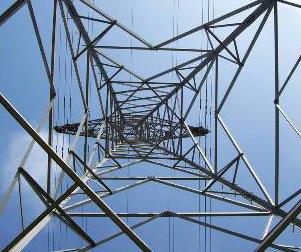
Separately, a group of devices should be singled out, which are characterized by the fact that they require an absolutely uninterrupted power supply from the network. This category of power supply includes energy receivers that operate continuously in order to safely stop the production flow, prevent the possibility of a fire and other emergencies. Important condition effective operation of such electrical mechanisms is to use a third source of independent power. For example, it can be a diesel generator or batteries. In this case, if it becomes impossible to supply energy from two main points of supply, the third will immediately come into operation. However, situations are likely where it is not possible to use the aforementioned additional source. In this case, the use of the so-called technological reserve is allowed, which also contributes to the smoothest and fastest shutdown of production activities. 
2 group
The second category of power supply to consumers is distinguished by some relaxations in the requirements for power supply from the network. It includes such receivers and devices, an interruption in the operation of which can cause a significant decrease in the output of manufactured products, downtime of production equipment and equipment involved in a particular technological process. In addition, the considered category of power supply, disconnected for a certain period of time, may entail a violation of normal living conditions for a significant number of residents of the state. The requirements for power supply are similar to the criteria for the first group, but there are some differences. The second category of power supply needs energy from two places, however, a temporary power outage is allowed, sufficient to switch from one source to another by means of a mobile network team or operational personnel of the consumer himself. 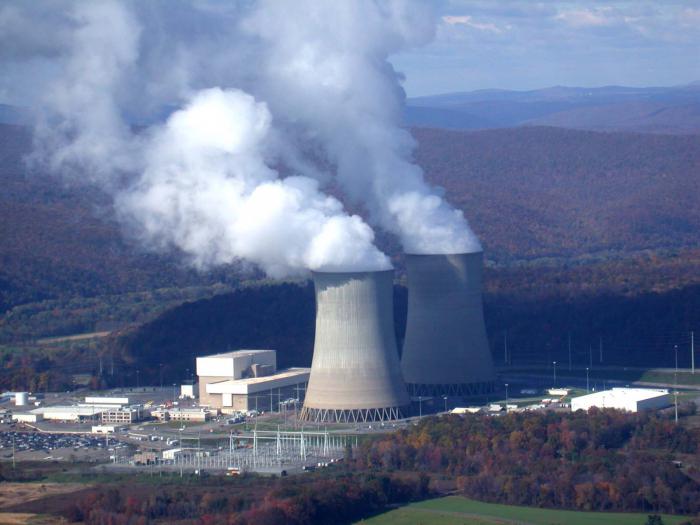
3 group
This group is the most extensive. Category 3 power supply includes all those devices that are not included in the previously listed groups. However, it also makes some demands. For example, the period of interruption in power supply is allowed no more than 72 total hours during the year and no more than 24 consecutive hours. 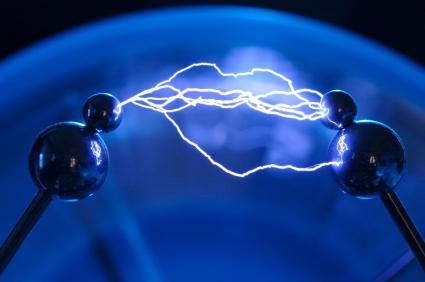
Application in practice
It should be noted that the category of power supply of the object may change if such a need arises. Of course, it all depends on its purpose. If any production site is considered, then most likely it will be assigned the first or second reliability group. Conversely, the category of residential power supply will most often be the third.
Conclusion
It is not easy to imagine the normal life of any modern person without electrical energy. A reliable supply of such resources has become necessary for the efficient operation of factories and industries, educational and health institutions, components of the housing and communal sector and elements of agriculture.
Quote from andrewfrol:
an expert told me that diesel is not an independent but a backup source and is not suitable for category 1. Is he right?
PUE
1.2.10.Independent power supply- source of power, on which the voltage is stored in the post-accident mode within the regulated limits when it disappears on another or other power sources.
Independent power supplies include
two sections or busbar systems of one or two power plants and substations, while meeting the following two conditions:
1) each of the sections or bus systems, in turn, is powered by an independent power source;
2) bus sections (systems) are not interconnected or have a connection that is automatically disconnected when one of the bus sections (systems) malfunctions.
As you can see, the main criterion is the preservation of voltage in the post-accident mode. A genset does not fit this definition, as a genset needs time to start up and reach its power consumption.
For example, terminology in STO Gazprom 2-2.3-141-2007
3.3.40 main source: Independent power supply for normal operation object with no time limit.
3.3.41independent power supply of the electrical receiver: Power source on which the voltage is maintained within the limits regulated by GOST 13109 for the post-emergency mode, when it disappears on another (or other) power source of this electrical receiver.
3.3.44 backup generating set(power plant): An electrical unit (power plant) switched on to the load in case of disconnection, overload or failure of the main source of electrical energy.
3.3.22 electrical unit: Electrical installation consisting of a motor-generator, control devices and equipment necessary to ensure autonomous operation.
3.3.45redundant power supply: A power supply that provides power of acceptable quality when there is a power failure at the main source.
3.3.46 guaranteed power supply: A device consisting of batteries with appropriate converters that ensures stable operation of power receivers of a special group (instrumentation and control systems of gas turbine units, automatic control systems, etc.) during transient conditions in the power supply system (voltage drops, frequency fluctuations,
idle pauses).
3.3.47uninterruptible power supply system(SBP): A set of functional devices (inverters, rectifiers, switching devices and batteries) that provide a system for maintaining the continuity of power to receivers in the event of an AC mains failure.
3.3.39 autonomy: Availability of power supply sources that ensure the life of the object in the event of a power failure on the main power sources.
Regarding your given scheme of the Trade and Office Center. To reduce the cost of a guaranteed power supply, install a fire engine and emergency lighting on it, and everything else on a DGU.
Then you will have a voltage supply from the DGU within the limits of the regulations, which should be prescribed in the design specification. This is the start time, the time to reach operating power.
And from the DGU, you will ensure continued operation. Given that your object during a short break does not entail material damage from a short break.
But from the UPS you ensure safety, since their interruption in the power supply will be the time for switching the ATS.
So you fit in the given Sergey 123 nominative

